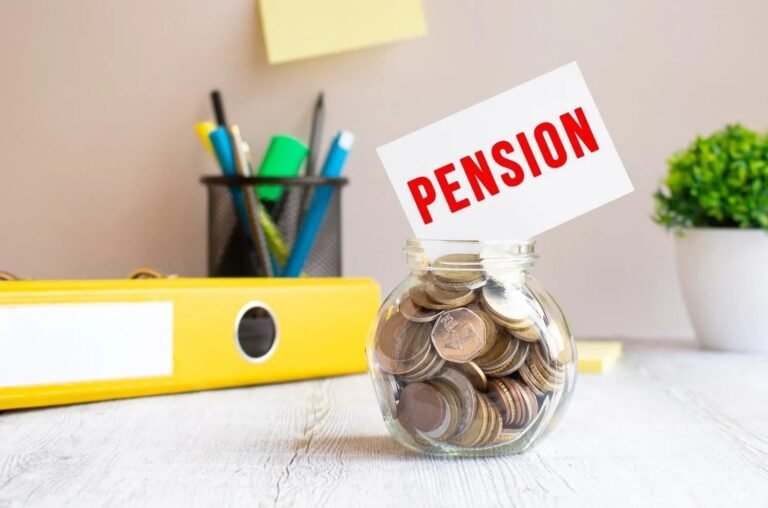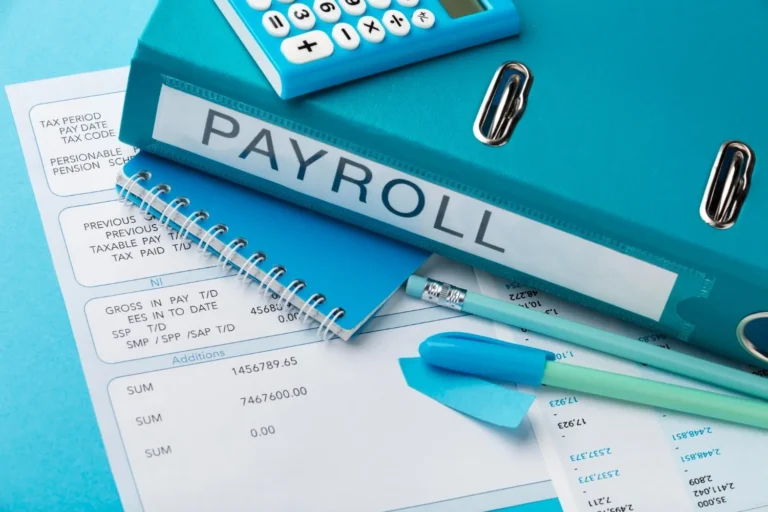For people getting close to getting their State Pension, those with uncertain earnings from self-employment, and even those living outside the UK, thinking about Voluntary National Insurance Contributions is really important.
This voluntary system, known as Class 3 National Insurance, provides a way for individuals to take action and fill in gaps in their contributions.
But what exactly does Voluntary National Insurance Contribution mean, and how can you make the payment? Let us take a closer look at the details of Voluntary National Insurance Contribution.
What is Voluntary National Insurance Contribution?
Voluntary National Insurance Contributions in the UK offer individuals the flexibility to make additional payments into the National Insurance system. This option becomes valuable when individuals experience gaps in their National Insurance record, either due to insufficient payments in National Insurance contributions or a lack of National Insurance credits, when not actively contributing.

HMRC categorises the individuals contributing voluntarily under Class 3 National Insurance.
Contributing towards National Insurance voluntarily is a way for people to proactively fill gaps in their National Insurance record, ensuring eligibility for state benefits and a more secure financial future.
Why should I voluntarily contribute to National Insurance?
Opting for voluntary contributions is an intelligent choice to address gaps in your National Insurance record. These gaps often arise because of
-
- A shortfall in qualifying years for reaching state pension age,
-
- Exemption from contributions because of low profits for self-employed,
-
- Living outside the UK but still wanting to secure a pension in the UK,
-
- Wanting to increase your weekly State pension amount (Voluntary contributions, however, may not always increase your state pension)
Voluntary contributions provide a way to fill these gaps actively, ensuring a more comprehensive and secure National Insurance record, especially when aiming for a well-rounded pension plan.
Here is a breakdown of why you might consider making voluntary contributions to NI:
Close to State Pension Age with Insufficient Qualifying Years
If you are approaching the age when you can receive your state pension (currently sixty-six for both men and women) but have yet to work enough years to receive the full amount, making voluntary contributions can really help.
Individuals can bridge the gap and enhance their pension entitlement by opting for voluntary payments, ensuring a more comfortable retirement.
Inability to Accumulate Qualifying Years during Working Life
Planning for the future is essential, and some individuals may anticipate being unable to accumulate the required qualifying years for the full State Pension over the course of their working lives. Voluntary contributions offer a proactive solution, allowing individuals to shore up their National Insurance record and safeguard their eligibility for state benefits.
Self-Employed but Exemption from Contributions due to low profits
Entrepreneurs and self-employed individuals who file Self-Assessment tax returns may be exempt from paying Class 2 contributions due to low profits (currently £12,570 for 2023/24). Instead of these mandatory payments, you can make voluntary contributions.
This means you can pay some money into the system to keep your eligibility for state benefits without worrying about the usual costs tied to how much money you are making. It gives you a more flexible way to stay qualified for benefits without the financial pressure linked to your business profits.
Living Outside the UK but Seeking Benefit Qualification
In today’s global world, people might live outside the UK but still want access to certain benefits. Voluntary contributions provide a solution for those living abroad who wish to stay eligible for benefits, keeping a connection to the UK’s social security system intact.
What does Qualifying years mean regarding National Insurance Contribution in the UK?
Qualifying years in the context of NI refer to the number of years an individual needs on their National Insurance record to be eligible for the new State Pension in the United Kingdom.
To qualify for any amount of the new State Pension, one typically needs at least ten qualifying years (35 qualifying years for full state pension), and these years do not have to be consecutive.
During these ten years, individuals must meet specific criteria, such as working and paying National Insurance contributions, receiving National Insurance credits (for reasons like unemployment, illness, or being a parent or carer), or making voluntary National Insurance contributions.
Who is eligible to pay Voluntary National Insurance contributions?
To contribute to National Insurance voluntarily, you must fulfil the eligibility criteria applicable to the specific period for which you intend to make these contributions.

Suppose you are over 16 and under pensionable age and have satisfied the conditions for residence in Great Britain in regulation 145(1)(e). In that case, you can contribute to filling gaps in your National Insurance record from the past six years.
For example,
You can fill in any gaps in your contributions for the tax year 2019 to 2020 until the deadline of 5 April, 2026.
Additionally, if you wish to make voluntary contributions for the tax years 2016 to 2017 or 2017 to 2018, the deadline for these payments has been extended, and you now have until 5 April, 2025 to make those contributions.
This means that the option to pay voluntarily is applicable for addressing any missed contributions or gaps in your record within this specific timeframe.
But not everyone is eligible to pay it. Under which class of NI do you pay? It depends on the status of your employment.
I am employed. Can I voluntarily contribute under Class 3 NI?
Yes, if you are employed, earning less than £123 a week, and are not eligible for NI credits, you can pay under class 3 NI Contributions.
I am self-employed. Under which Class of NI should I voluntarily contribute?
The appropriate class of National Insurance (NI) to voluntarily contribute as a self-employed individual depends on your annual profits. If your profits are below £6,725 or you have a specific job, such as an examiner or business owner of property or land, you have the option to contribute either under Class 2 or Class 3 NI, based on the specific benefits you aim to avail.
Opting for Class 2 NI contributions makes you eligible for the Basic State Pension, New State Pension, Contribution-based Employment and Support Allowance, Maternity Allowance, and Bereavement Support Payment.
Conversely, selecting Class 3 NI Contributions limits your eligibility to only the Basic State Pension and New State Pension.
Therefore, consider the benefits you want when deciding whether to pay Class 2 or Class 3 contributions. Your choice depends on what kind of support you would like to receive.
What if my profits are above £6,725 as a self-employed?
If you are self-employed and earn profits between £6,725 and £12,570 a year, your contributions are considered as if you have paid them under Class 2 NI contributions to safeguard your National Insurance record.
If you earn profits above £12,570, you pay under Class 4 NI contributions. Unlike other classes of contributions that offer State benefits in return for payments, you do not get any benefit in return under Class 4 NI Contributions.
The Amount of NI to be contributed by Self-Employed for 2023/24 can be summarised as below: –
|
Annual Profits |
Class of NI |
Rate of NI |
|---|---|---|
|
£6,725 – £12,570 |
Class 2 |
£3.45 per week |
|
£12,570 – £50,250 |
Class 4 |
9% on profits |
|
Above £50,250 |
Class 4 |
2% on profits |
You can pay Class 2 and Class 4 National Insurance through self-Assessment.
Explore the intricacies of “UK Payroll Taxes and Deductions for Employers” in our comprehensive guide. Dive in now to master the essentials and streamline your payroll process.
I am employed and have a side hustle. How much of NI should I contribute?
If you are both an employee and engaged in self-employed work, your employer will deduct Class 1 National Insurance from your wages on your employment.
Additionally, depending on your profit, you might need to pay Class 2 and 4 National Insurance for your self-employed activities.
The combination of your wages and earnings from self-employed work determines your pay. HMRC will inform you of the applicable National Insurance amount after you have completed and filed your Self-Assessment tax return.
I am Unemployed. Can I pay Voluntary NI Contributions?
Yes, if you are unemployed and are not claiming benefits you can choose to pay Voluntary National Insurance contributions under Class 3.
I am living abroad; can I pay Voluntary National Insurance contributions?
If you reside in another country and are not currently employed, you can make voluntary contributions under Class 3.
However, it is crucial to
-
- have lived in the UK for a continuous period of at least three years or
-
- made contributions for a minimum of three years at some point.
Conversely, if you live and work abroad, Class 2 National Insurance is the appropriate contribution.
How much should I pay under Voluntary National Insurance Contributions?
If you want to pay under Voluntary National Insurance Contributions, the amount is £3.45 a week under Class 2 and £17.45 a week for Class 3.
However, if there is a gap in your National Insurance record between April 6, 2016, and April 5, 2023, you need to pay the rates applicable for the tax year 2022 to 2023.
How can I check my National Insurance record?
You can review your National Insurance record to check your payments until the beginning of the current tax year (starting April 6, 2023). This record reveals any National Insurance credits you have received and helps identify non-qualifying years.

Additionally, you can find out if you are eligible to make voluntary contributions to fill these gaps and learn about the associated costs.
There are three ways to check the National Insurance record:
1. Sign into your Personal Tax Account
You can access your National Insurance information by signing into your personal tax account using your Government Gateway user ID and password. If you do not have a user ID, you can create one when you apply.
2. Request a Printed National Insurance Statement
If you live in the UK and prefer a physical statement, you can request a statement of National Insurance account online. You will be given a unique reference number when you submit the form. Include this number with the additional information you send by post.
You can track the progress of the form online using the same reference number.
If you live outside the UK, you can apply both online as well as you can request a statement of National Insurance contributions (NICs) by post.
If you prefer using the postal form, you must fill it completely before printing. Unfortunately, you cannot save the form if it is not finished, so gathering all the information you need before you begin filling it in is essential.
3. Write to HM Revenue and Customs (HMRC)
You can write to HMRC at the National Insurance Contributions and Employers Office, providing the necessary details and indicating the years you want your statement to cover.
The address is:
HM Revenue and Customs
BX9 1AN
You will need to specify the years you wish the statement to include.
However, it is important to note that it is not possible to ask for statements covering the ongoing or last tax year.
Following these steps, you can quickly check and obtain your National Insurance record, ensuring a clear understanding of your contribution history and eligibility for benefits.
How to pay voluntary Class 3 National Insurance?
You can make an online payment by authorising a transaction through your Internet banking account.
Here is what you will need:
-
- Your online banking information.
-
- The 18-digit reference number that you can find on your payment request from HM Revenue and Customs (HMRC).
After making a payment, you do not need to contact HM Revenue and Customs (HMRC) for confirmation. Your payment details will be accessible in your HMRC account. Please note that this confirmation may take up to 8 weeks.
Dive into our guide on “deferring National Insurance” to unlock savings and optimise your financial strategy. Read now and discover how to maximise your benefits.
How to pay Voluntary Class 3 National Insurance through cheque?
To pay Voluntary Class 3 National Insurance by cheque, follow these steps:
1. Send your cheque to the following address:
HM Revenue and Customs
National Insurance Contributions and Employer Office
BX9 1AN
2. Include Payment Details:
Your HMRC payment request will include a payslip with an 18-digit reference number. Send this payslip along with your cheque. Write your 18-digit reference number on the back of the cheque.
While sending the Payslip and Cheque:
-
- Do not fold the payslip or cheque.
-
- Do not fasten them together.
4. Request for Receipt:
If you desire a receipt, you should include a note with your payment asking for one.
5. If You do not Have an HMRC Payslip:
If you do not have an HMRC payslip, include a note with the following details:
-
- Your name, address, and phone number.
-
- The amount you are paying.
-
- The period you are making the payment for.
-
- Your 18-digit reference number or National Insurance number.
It takes about three working days for your payment to get to HMRC.
Conclusion
In conclusion, understanding and considering voluntary National Insurance contributions can be crucial in securing a stable financial future. Whether you are nearing state pension age, self-employed with fluctuating profits, living abroad, or facing gaps in your contribution history, making informed decisions about voluntary payments can make a significant difference.
Choosing Class 3, National Insurance lets you actively fill in gaps, ensuring you qualify for state benefits and have a better pension plan. It is essential to recognise the role of voluntary contributions in addressing specific scenarios, such as low profits for the self-employed or the desire to secure a pension while living outside the UK.
Checking your National Insurance record and understanding the eligibility criteria for voluntary contributions empowers individuals to make informed choices about their financial well-being.
Whether you choose to pay online or by cheque, following the outlined steps ensures a smooth process, allowing you to take control of your National Insurance contributions and work towards a more secure financial future.









